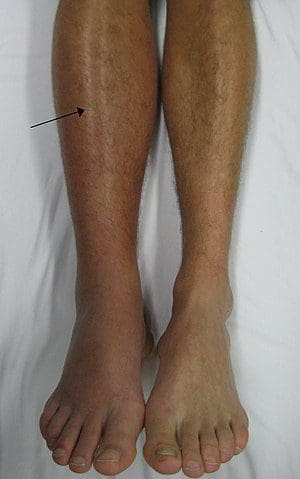
March is Deep Vein Thrombosis (DVT) Awareness Month. DVT is a condition that can be life-threatening, but the symptoms are often silent. It occurs when a blood clot forms in one of the large veins, frequently in the legs. The major danger is that a piece of the clot breaks off and travels to the lungs, which is called a pulmonary embolism. This can be immediately fatal and is the cause of about 300,000 deaths per year.
The major causes of DVT are dehydration and lack of movement, thus travelers making long airplane flights have increased risk. Although many people don’t even know they have it, some indicators are pain or tenderness, swelling or redness in the lower extremities. The good news is that while Deep Vein Thrombosis is serious, it is also preventable and there are a couple key ways that travelers can reduce their risk for DVT.
How to help prevent DVT
The day before you fly, get moving! Exercise gets your blood happily circulating so you have a leg up, so to speak. Practice good nutrition in your everyday life and drink plenty of water.
On travel day, be sure to stay hydrated by drinking plenty of water. Take a water bottle with you on the plane so you are not dependant on minimal airplane service. Travel Maestro tip: Caffeine and alcohol dehydrate so they’re not a substitute for a tall drink of water.
Being buckled in a seat with minimal leg room for a long plane ride restricts mobility, which is why DVT is sometimes nicknamed “economy class syndrome.” Get the blood moving with these simple exercises:
- Wear loose-fitting shoes that are easy to slip off during the flight. Compression socks or hose help maintain circulation in the legs.
- While seated, rotate your ankles in a circular motion 10 times each direction.
- Tip your toes up and down 20 times.
- Get out of your seat to walk and stretch every hour or so.
- Stand on your toes repeatedly to stretch the calf muscles and increase circulation.
After you land, walk briskly through the airport. At your hotel, lay on the bed with your feet on the headboard or wall. Straighten your legs with your feet slightly elevated above the rest of your body and relax for 15 minutes. This will help circulate pooled blood away from your legs.
If you feel that you are suffering from or at risk of DVT, be sure to discuss it with your physician immediately. Anti-coagulant medications can successfully treat the condition. Otherwise, keep moving, drink lots of water and keep traveling!







Leave a Reply